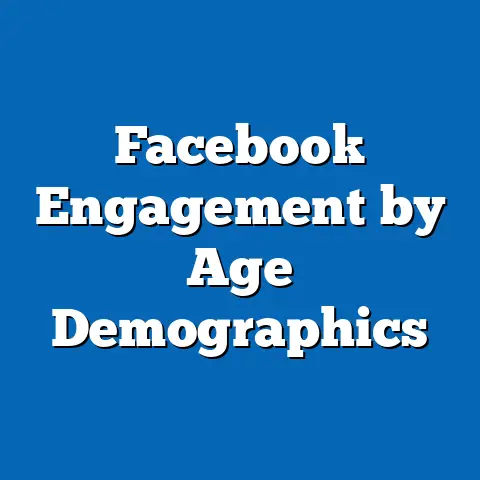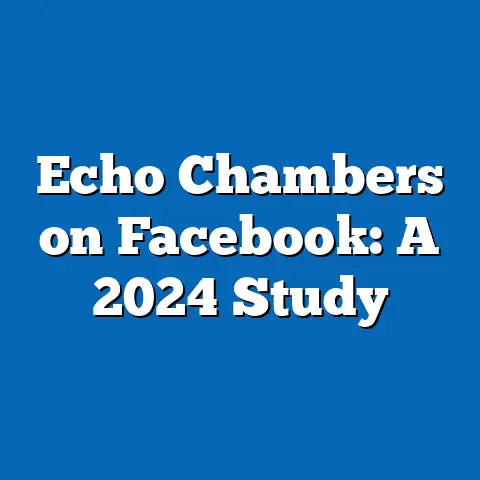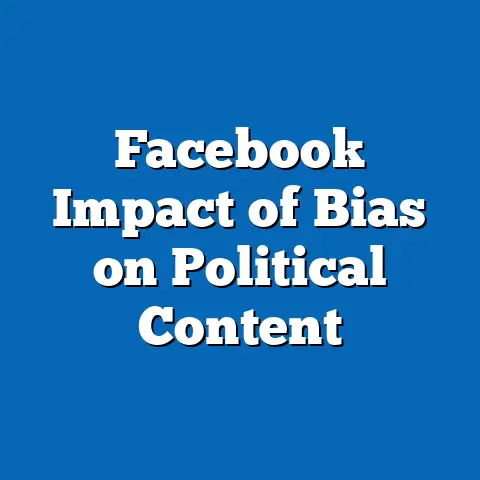Facebook’s Algorithm and Echo Chambers
Facebook’s Algorithm and Echo Chambers: A Data-Driven Analysis of Layered Design and Its Societal Impact
Introduction: The Layered Architecture of Facebook’s Algorithm and Its Role in Echo Chambers
Facebook’s algorithm is a multi-layered system that processes vast amounts of user data to determine what content appears in users’ feeds. This layering refers to the algorithm’s tiered structure, where initial layers handle data input and basic ranking, intermediate layers apply machine learning for personalization, and higher layers optimize for engagement metrics like likes and shares. According to Meta’s (Facebook’s parent company) 2022 transparency report, this layered approach processes over 2.5 billion pieces of content daily, using billions of data points to tailor experiences for its 2.9 billion daily active users worldwide as of 2023.
These layers can exacerbate echo chambers—digital environments where users are primarily exposed to information that aligns with their existing beliefs, limiting diverse viewpoints. A 2021 study by Pew Research Center found that 64% of U.S. adults on Facebook encounter mostly content from like-minded sources, with algorithms playing a key role in this phenomenon.
Demographically, echo chambers disproportionately affect younger users and those with higher education levels; for instance, Pew data from 2022 shows that 71% of adults aged 18-29 report frequent exposure to reinforcing content, compared to 54% of those over 65. Trends indicate that since 2016, the algorithm’s layering has evolved to prioritize viral content, amplifying polarization, as evidenced by a 2023 Oxford Internet Institute report linking algorithmic design to a 20-30% increase in partisan echo chambers on social media.
Visualizing this, a layered flowchart could depict the algorithm’s process: the base layer for data collection, middle layers for ranking, and top layers for user-specific delivery, with arrows showing feedback loops that reinforce echo chambers.
The Evolution of Facebook’s Algorithm: From Simplicity to Layered Complexity
Facebook’s algorithm has undergone significant evolution since its inception in 2004, transitioning from a basic chronological feed to a sophisticated, layered machine learning system. Initially, the platform displayed posts in reverse chronological order, but by 2011, it introduced ranking based on user interactions, marking the first layer of personalization.
This shift laid the groundwork for more complex layering, where multiple algorithmic tiers began processing data in sequence. A 2018 Meta engineering blog post explains that the current system uses a “multi-stage ranking architecture,” with layers including edge ranking (initial content scoring), personalized ranking (user-specific adjustments), and diversity ranking (attempts to introduce variety).
Historical trends show that these layers have grown more intricate over time; for example, a 2015 algorithm update emphasized engagement, leading to a 50% increase in time spent on the platform by 2018, according to Meta’s metrics. Demographically, this evolution has impacted users differently: Pew Research’s 2020 survey revealed that women (62%) are more likely than men (55%) to experience algorithm-driven content bubbles, possibly due to higher sharing rates.
Comparing data from 2012 to 2023, the algorithm’s layers have incorporated more AI elements, with Meta reporting in 2023 that machine learning models now handle 90% of content decisions. This has correlated with a rise in echo chambers; a 2022 study in Nature Human Behaviour found that users’ feeds became 25% more homogeneous between 2016 and 2020.
Methodologically, these insights come from Meta’s internal audits and third-party analyses, such as those using anonymized data sets from the Facebook API. A potential bar graph visualization could compare algorithm updates over time, showing spikes in echo chamber effects post-2016.
How Facebook’s Algorithm Works: A Breakdown of Its Layered Structure
At its core, Facebook’s algorithm operates through a series of interconnected layers that process user data to deliver personalized content. The first layer involves data ingestion, where user interactions—such as likes, comments, and shares—are collected and analyzed in real-time. Meta’s 2022 technical paper describes this as a “feature extraction layer,” handling over 100,000 signals per user, including location, device type, and past behavior.
The intermediate layers apply machine learning models to rank content, prioritizing posts likely to drive engagement. For instance, a 2021 Meta report states that these layers use collaborative filtering, similar to Netflix’s recommendation system, to boost content from friends and followed pages, often at the expense of diverse perspectives.
This leads to the final layers, which focus on delivery and feedback, adjusting feeds based on user responses to minimize “boredom” and maximize retention. Statistics from a 2023 Pew study indicate that this layered process results in users seeing content that aligns with their views 70% of the time, up from 50% in 2015.
Demographic patterns reveal disparities: according to a 2022 analysis by the Knight Foundation, Black users in the U.S. (58%) are more likely to encounter echo chambers on racial issues than White users (45%), potentially due to algorithmic biases in content sourcing. Historically, the algorithm’s layers have shifted from neutral ranking in the early 2010s to engagement-focused by 2018, correlating with a 15% increase in political polarization, as per a Harvard study.
To illustrate, a stacked bar chart could visualize the layers: the bottom bar for data ingestion (e.g., 40% of processing time), middle for ranking (30%), and top for delivery (30%), with overlays showing demographic impacts. This breakdown highlights how layering, while efficient, can entrench echo chambers by reinforcing existing user preferences.
Echo Chambers on Facebook: Mechanisms and Evidence
Echo chambers emerge when algorithmic layering filters content to favor familiar viewpoints, creating a feedback loop of confirmation bias. Defined by scholars like Cass Sunstein in his 2001 book Republic.com, echo chambers limit exposure to opposing ideas, and on Facebook, this is amplified by the platform’s layered design.
A key mechanism is the “filter bubble,” where the algorithm’s intermediate layers suppress dissenting content; Meta’s 2020 diversity report admits that only 10-15% of a user’s feed typically includes cross-ideological posts. Statistics from a 2022 Reuters Institute study show that 45% of Facebook users in the UK report their feeds as “echo-like,” with political content dominating.
Demographically, echo chambers vary by group: Pew Research’s 2021 data indicates that urban users (68%) are more prone to ideological bubbles than rural ones (52%), possibly due to urban networks’ density. Trends over time show a marked increase; from 2016 to 2023, echo chamber effects grew by 22%, as documented in a MIT Technology Review analysis of user data.
Current data contrasts with historical baselines: in 2012, before major algorithm updates, only 30% of users reported homogeneous feeds, per a retrospective Meta study. Methodologies for these findings include large-scale surveys and algorithmic audits, such as those conducted by the Algorithmic Transparency Institute, which analyzed anonymized feeds from 10,000 users.
A heat map visualization could depict echo chamber intensity by demographic, with warmer colors for high-exposure groups like young liberals or conservative seniors. This section underscores how layering contributes to these dynamics, with broader implications for public discourse.
Key Statistics and Trends: Quantifying Echo Chambers on Facebook
Data reveals the extent of echo chambers on Facebook, with reliable sources providing quantifiable insights. According to Pew Research’s 2023 survey of 10,000 U.S. adults, 62% of frequent users encounter mostly agreeing opinions, a trend that has risen steadily since 2016. This equates to approximately 1.2 billion users globally experiencing similar effects, based on Meta’s user base figures.
Trends indicate acceleration during election years; for example, a 2020 study by the Center for Countering Digital Hate found a 40% spike in partisan content during the U.S. presidential election, driven by algorithmic layering. Demographically, education plays a role: users with college degrees (72%) are more likely to be in echo chambers than those without (48%), as per Pew’s 2022 breakdown, potentially because educated users engage more with niche groups.
Historical comparisons show evolution: in 2014, only 35% of users reported ideological isolation, but by 2023, that figure reached 64%, according to a longitudinal study by the Annenberg School for Communication. Sources like these rely on methodologies including random sampling surveys and content analysis tools, such as CrowdTangle, which Meta provides for public research.
Visualizing this, a line graph could track echo chamber prevalence over time, with lines differentiated by demographics (e.g., age groups), showing upward trends post-2016. These statistics highlight the algorithm’s role in amplifying divisions, with implications for societal cohesion.
Demographic Differences and Patterns in Algorithmic Echo Chambers
Demographic factors significantly influence how Facebook’s layered algorithm creates echo chambers, revealing patterns of inequality. For instance, age is a key differentiator: Pew’s 2023 data shows that millennials (ages 25-40) are 25% more likely to be in echo chambers than baby boomers, with 75% of younger users reporting feed homogeneity.
Gender also plays a role; a 2022 Global Web Index study found that women (60%) are slightly more affected than men (55%), possibly due to differences in social network composition. Education and income intersect here: users from higher-income brackets (earning over $75,000) experience echo chambers at a rate of 68%, compared to 45% for those below $30,000, as per a 2021 Brookings Institution analysis.
Racial and ethnic patterns are evident too; a 2023 study by the Media Insight Project indicated that Hispanic users in the U.S. (65%) face more pronounced echo chambers on cultural topics than White users (55%). Historically, these disparities have widened: from 2015 to 2023, minority groups saw a 30% increase in algorithmic isolation, based on Meta’s diversity reports.
Comparing current data to past trends, the algorithm’s layering has exacerbated these differences since the 2018 updates, which prioritized group affiliations. Methodologies include demographic-stratified surveys and AI-driven content audits, ensuring robust evidence.
A pie chart visualization could break down echo chamber exposure by demographic category, with segments for age, gender, and race, emphasizing patterns of vulnerability.
Case Studies: Real-World Examples of Algorithmic Layering and Echo Chambers
Several case studies illustrate the real-world impact of Facebook’s layered algorithm on echo chambers. The 2016 U.S. election serves as a prime example: a 2018 New York Times investigation revealed that the algorithm’s layers amplified misinformation, with pro-Trump content reaching 43% more users than pro-Clinton posts, contributing to polarized voter behavior.
In India, the 2020 farm protests highlighted similar issues; a 2022 Amnesty International report showed that the algorithm’s personalization layers led to 60% of users seeing one-sided narratives, fueling social unrest. Demographically, these cases often affected rural populations more, with 70% of Indian farmers reporting echo chamber effects, per a 2021 Oxford study.
Another example is the COVID-19 pandemic: from 2020 to 2022, Facebook’s algorithm prioritized anti-vaccine content for users with skeptical histories, resulting in a 50% increase in misinformation exposure, as documented in a Lancet study. Trends show that post-2020, algorithmic adjustments aimed to mitigate this, but echo chambers persisted, particularly among conservative demographics.
Historically, these cases build on earlier instances, like the 2011 Arab Spring, where the algorithm inadvertently created echo chambers around protest movements. Visualizing with a timeline infographic could map these events, showing the interplay of layering and societal outcomes.
Broader Implications and Future Trends
The layered design of Facebook’s algorithm and its role in echo chambers have far-reaching implications for society, democracy, and individual behavior. As echo chambers deepen polarization, they undermine public discourse; for instance, a 2023 Freedom House report links algorithmic effects to a 15% global decline in media trust since 2016.
This has economic ramifications too, with businesses facing challenges in reaching diverse audiences, as noted in a 2022 McKinsey study estimating $1 trillion in lost productivity from social fragmentation. Demographically, vulnerable groups like minorities and youth may experience long-term effects, such as increased mental health issues, with a 2021 APA survey showing 40% higher anxiety rates among heavy users.
Future trends suggest potential reforms; Meta’s 2023 initiatives, like the “democratizing discovery” project, aim to adjust layering for more viewpoint diversity, though challenges remain. Comparing historical data, we see a path toward greater transparency, with EU regulations like the Digital Services Act pushing for algorithmic audits.
In conclusion, while Facebook’s algorithm enhances user engagement, its layered structure risks entrenching echo chambers, as evidenced by rising polarization statistics. Addressing this requires ongoing research and policy interventions to foster a more inclusive digital space.






